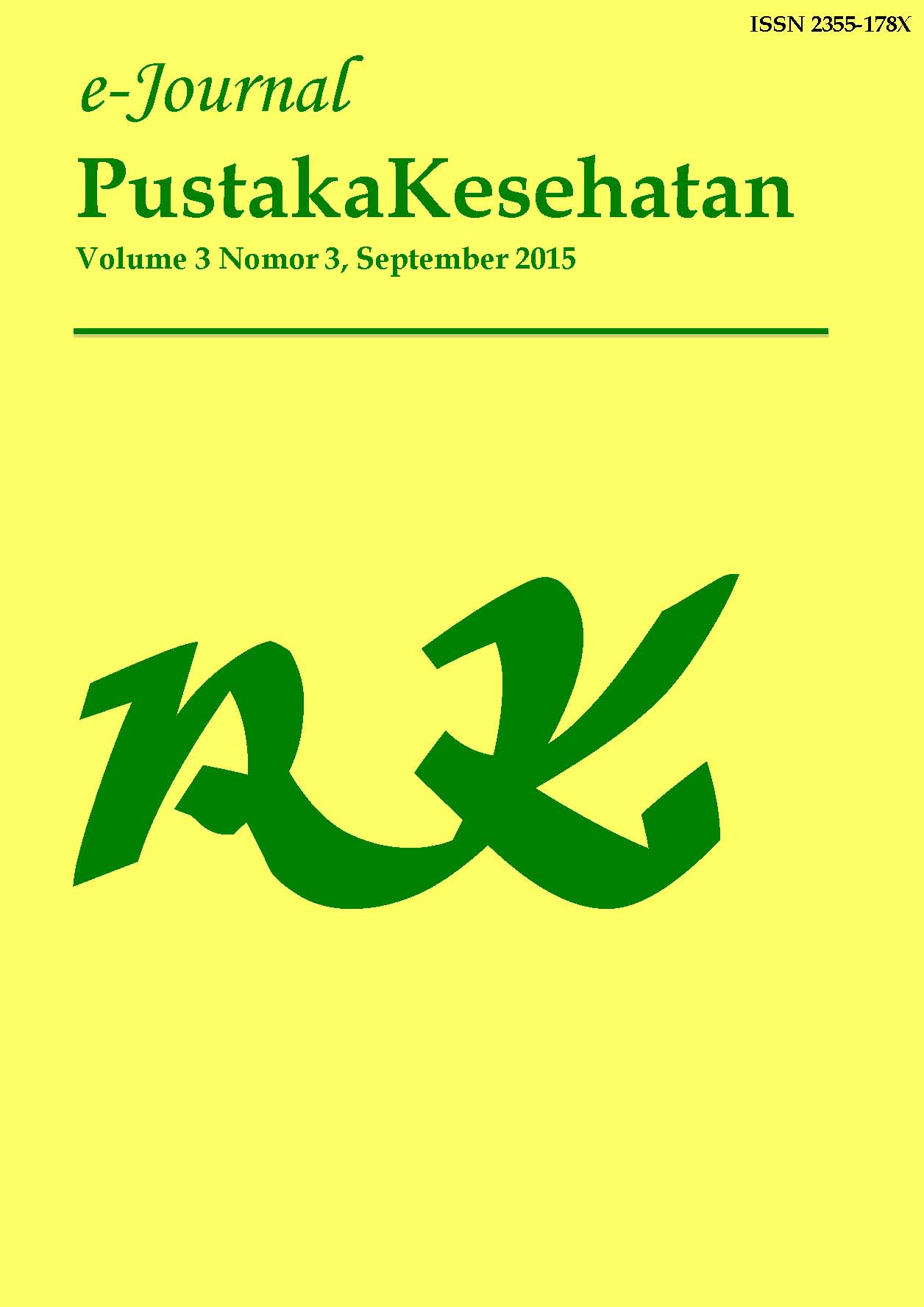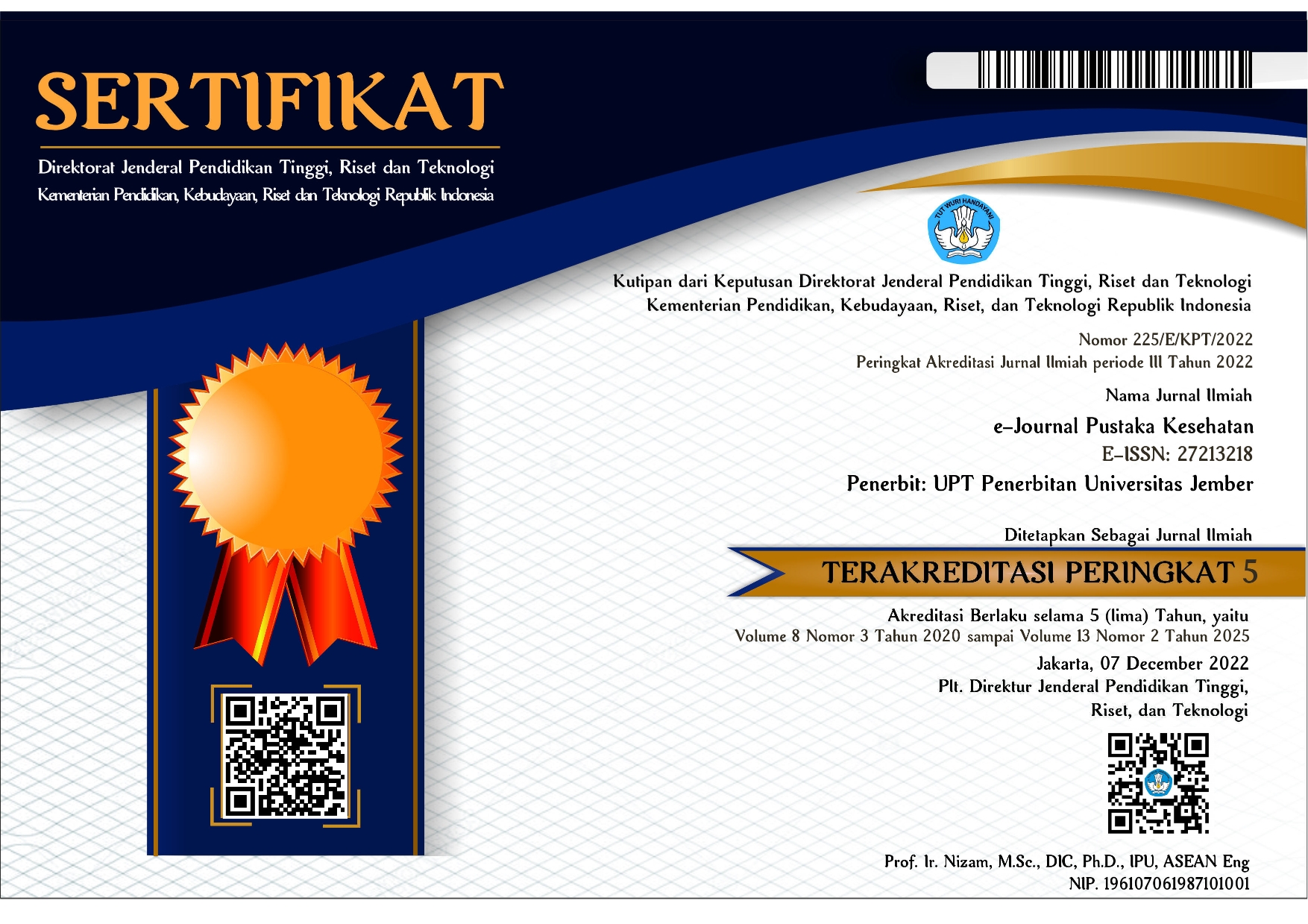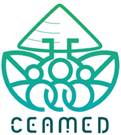Pengaruh Teknik Talking Stick terhadap Pengetahuan dan Sikap dalam Pencegahan HIV/AIDS Pada Remaja di SMP Negeri 1 Puger Kabupaten Jember (The effect of Talking Stick towards knowledge and attitude in preventing HIV/AIDS of the teenagers In Puger 1
Abstract
Teenagers are the changing time in which often do trial and error and also juvenile delinquency. An example of juvenile delinquency is free sex. Teenagers’ knowledge and attitude in preventing HIV/AIDS becomes the factor of teenager to free sex. One of the ways to improve teenager’s knowledge and attitude is doing education about health which is delivered using Talking Stick method. Experiment design used is quasy experimental with non equivalent pre post control group design. Sampling method using systematic random sampling with the total teenagers is 68 which consist of 34 control group and 34 intervention group. The result of analyzing data using Wilcoxon test is p value knowledge = 0,000 and p value attitude = 0,001 whereas the comparison between control group and intervention group using Mann Whitney test is p value knowledge and attitude is 0,000 and α = 0,05 so p value < 0,05. The analysis result show that is knowledge variable before talking stick application 61,8% have enough knowledge. After talking stick application 67,7% have good knowledge. In attitude variable before talking stick application is 67,6% have positive attitude. After talking stick application 100% have positive attitude. The conclusion is there are meaningful effects of Talking Stick to the knowledge and attitude of preventing HIV/AIDS to the teenagers in Puger 1 Junior High School and knowledge and attitude have differented between experiment group and control group. Recommendations are given to nurses is to be able to facilitate consultation about preventing HIV/AIDS to provide early knowledge for teenagers.
Keywords : attitude, HIV/AIDS, knowledge,talking stick, teenagers
e-Journal Pustaka Kesehatan has CC-BY-SA or an equivalent license as the optimal license for the publication, distribution, use, and reuse of scholarly work. Authors who publish with this journal retain copyright and grant the journal right of first publication with the work simultaneously licensed under a Creative Commons Attribution-ShareAlike 4.0 International License that allows others to share the work with an acknowledgment of the work's authorship and initial publication in this journal.











